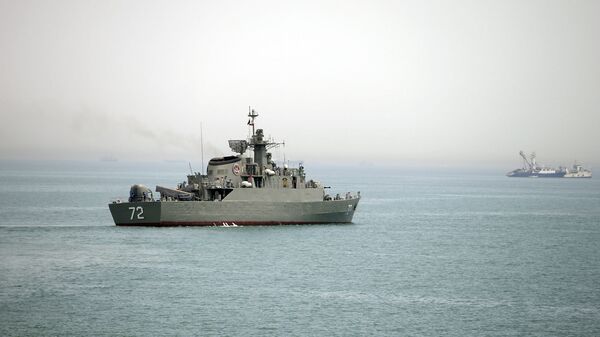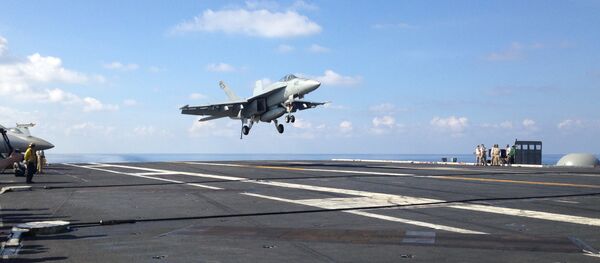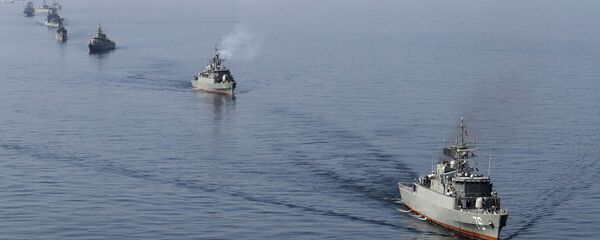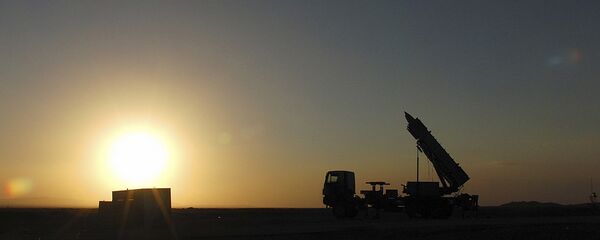"Before Khomeini's Islamic Revolution [of 1979], the Shah of Iran was known as 'the policeman of the Gulf', i.e. America's policeman, and having him on its side, the US did not 'need' a huge military presence there", Ghassan Kadi, a political analyst of Syrian origin, told Sputnik, commenting on the mounting tensions between Washington and Tehran in the Persian Gulf.
Although the US had long called the shots in the region the Islamic Revolution tremendously affected the balance of force, according to the analyst.
"This changed dramatically after the fall of the shah", he continued. "And even though the formerly deactivated American Fifth Fleet was not reactivated till 1995, the American naval presence returned with force to the region. And when Iran Air Flight 655 was downed on 3 July 1988, it was shot down by American Navy vessels operating in the Gulf".
The last essential US naval build-up in the region preceded Operation Desert Storm in 1990-1991, Kadi recalled.
Commenting on the latest deployment of a carrier strike group led by USS John C. Stennis in the Persian Gulf, he opined that "the arrival of a super carrier, or two, does not constitute a significant change to the status quo, and can only be seen as an action that seeks to intimidate the Iranians, no more".
The group arrived in the region on 8 December and took part in the joint naval exercises with the Essex Amphibious Ready Group (ARG) on 12 December in the Arabian Sea. According to The Wall Street Journal, the dispatch of the John C. Stennis Carrier Strike Group (CSG) was aimed at intimidating Tehran.

Blockade of the Strait of Hormuz: A Last Resort for Iran
Iran's strategic location allows it to maintain control over the Persian Gulf and particularly over the Strait of Hormuz. Thus it is hardly surprising that Tehran uses it as a bargaining chip amid the escalation of tensions between the US and Iran, prompted by the Trump administration's sanctions spree against the Islamic Republic.
Earlier Iranian President Hassan Rouhani signalled that Iran would block the Persian Gulf in case the US tried to prevent Iran from selling crude to its customers.
"A blockade of this nature, if it happens, will not only hurt America and its oil-exporting Arab allies and all nations that import oil from the Gulf, but it will also hurt Iran itself and its own customers; namely China, India, Japan, and South Korea", Kadi opined.
Kadi noted that Iranian lawmakers and military spokesmen keep reiterating that the Islamic Republic is quite capable to defending itself.
"Given the imbalance of power between Iran and America, it is highly unlikely that Iran will strike first. It would be foolhardy for Iran to deliberately opt to draw first blood", the analyst emphasised.
Trump's Waivers to Iran Customers are 'Laughable'
The latest batch of anti-Iranian sanctions imposed by Washington on November envisages disrupting Iran's oil trade. However, the US introduced waivers for eight countries — namely, China, India, South Korea, Japan, Italy, Greece, Taiwan, and Turkey — to maintain the fragile balance on the crude market.
So, what will happen when the exemptions expire in six months?
"Let us ask a slightly different question here, will China succumb to America's demands in the South China Sea?" Kadi asked. "To say the US is granting China a temporary waiver to import Iranian oil is indeed laughable. I cannot see India succumbing either after the six-month waiver expires, it will be interesting though to see what Japan will do".
According to the analyst the escalation of tensions over Trump's oil sanctions against Iran is quite probable.
"Come May 2019, unless the impasse is somehow resolved, it may not just cause an escalation between America and Iran only, but also with China and possibly India; albeit unlikely a military one", he suggested.
Iran Missile Programme: Will EU Adopt US Narrative?
The analyst believes that the timing of this hysteria looks rather suspicious.
"Are Pompeo and Die Welt now admitting that Iran did not have missiles that could reach Europe back then, but they do now? Was the West giving inaccurate assessments back then or now or on both occasions?" he asked.
The political analyst wonders whether European MSM did "a study into the increase in the number of threats Iran is receiving".
"The real question about where will the EU stand vis-à-vis Iran is more about whether or not it will adopt the American narrative, rather than whether or not it genuinely believes that Iran poses a military threat", he concluded.
The views and opinions expressed by the contributors do not necessarily reflect those of Sputnik.






